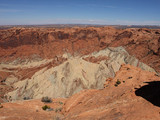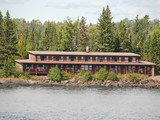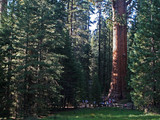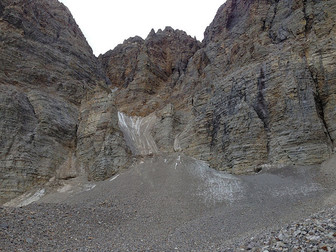Government Grants
Business Grants
Home Owner Programs
Federal Programs
About Us
Bat Conservation and Sagebrush Restoration in Great Basin National Park
A.
Project Goals Designed to support the priorities of the Secretary of the Department of Interior, this project will create jobs in the American economy, particularly important for underserved remote rural areas such as White Pine County, Nevada.
This project will create scientific information necessary to identify and implement best practices for management of bats and sagebrush ecosystems.
Funding for this project was obtained to proactively prevent listing of bat species, which are threatened by white nosed syndrome, and sage grouse, threatened by loss of sagebrush habitat.
The sagebrush restoration portion of this project reduces competition for grazing resources by increasing perennial grasses and reducing conifer cover.
Although livestock is not permitted in the park, the improvement in range conditions will allow non-livestock grazing animals to use the park, thus reducing competition for forage outside the park.
Conifer removal will increase the short term water availability to downstream users.
Inherent in this project are close relationships and partnerships with federal and state agencies, such as Bureau of Land Management, US Forest Service, and Nevada Department of Wildlife.
This cooperative, partnership based approach leverages funding across administrative boundaries to increase efficiency, scope of inference, and the return on investment for the available funding.
Bats are vital to ecosystem functioning.
White nosed syndrome (WNS) is a serious disease affecting bats in the United States.
Believed to have been introduced from Europe, isolating and documenting the spread of white nosed syndrome are critical objectives for biologists managing caves and bat populations.
Bat monitoring requires a diverse array of techniques including mist netting, exit and roost counts, acoustic sampling, data analysis and management in an occupancy model framework.
Public outreach is also critical to inform park visitors about their role in preventing the spread of WNS.
Conifer encroachment describes a successional process of increasing conifer cover and density in sagebrush ecosystems.
Historically, conifer encroachment was regulated by periodic natural disturbances, most importantly high intensity fire.
In recent decades, factors of fire exclusion, increased atmospheric carbon dioxide concentration, increased winter precipitation, warmer temperatures, and selective herbivory by livestock have interacted to increase the rate and scale of conifer encroachment across the Great Basin.
In conifer dominated woodlands, the majority of plant biomass is sequestered as unpalatable cellulose or lignin, which is unavailable to most animals as food.
Shrub, grass, and forb production show less inter-annual variation than conifer mast, produce more palatable seeds and forage, and support higher insect diversity than woodlands, providing a more reliable food source to wildlife than conifer mast.
Overall conifer encroachment in sagebrush ecosystems reduces habitat heterogeneity, niche space, and resource availability, negatively affecting many wildlife populations, such as sage grouse, pygmy rabbits, and mule deer.
Conifer removal is the primary restoration tool in conifer encroached, sagebrush ecosystems.
Great Basin coniferous woodlands are dominated by two species:
Singleleaf piñon pine and Utah juniper and methods of conifer removal include chaining in high density conifer stands, lop and scatter of low density conifers, mastication using machinery, prescribed fire, and hand cutting with chainsaws.
To increase shrubs and herbaceous plants, conifer removal projects often incorporate seeding of native shrubs and herbaceous plants into management actions.
The mission of Great Basin National Park is to â¿¿protect a representative portion of the Great Basin region for current and future enjoyment and scientific understandingâ¿.
This protection extends to healthy and resilient sagebrush and wetland ecosystems and components of biological diversity, such as bats, with are critical to maintain ecosystem functioning, goods and services.
Project Goals Designed to support the priorities of the Secretary of the Department of Interior, this project will create jobs in the American economy, particularly important for underserved remote rural areas such as White Pine County, Nevada.
This project will create scientific information necessary to identify and implement best practices for management of bats and sagebrush ecosystems.
Funding for this project was obtained to proactively prevent listing of bat species, which are threatened by white nosed syndrome, and sage grouse, threatened by loss of sagebrush habitat.
The sagebrush restoration portion of this project reduces competition for grazing resources by increasing perennial grasses and reducing conifer cover.
Although livestock is not permitted in the park, the improvement in range conditions will allow non-livestock grazing animals to use the park, thus reducing competition for forage outside the park.
Conifer removal will increase the short term water availability to downstream users.
Inherent in this project are close relationships and partnerships with federal and state agencies, such as Bureau of Land Management, US Forest Service, and Nevada Department of Wildlife.
This cooperative, partnership based approach leverages funding across administrative boundaries to increase efficiency, scope of inference, and the return on investment for the available funding.
Bats are vital to ecosystem functioning.
White nosed syndrome (WNS) is a serious disease affecting bats in the United States.
Believed to have been introduced from Europe, isolating and documenting the spread of white nosed syndrome are critical objectives for biologists managing caves and bat populations.
Bat monitoring requires a diverse array of techniques including mist netting, exit and roost counts, acoustic sampling, data analysis and management in an occupancy model framework.
Public outreach is also critical to inform park visitors about their role in preventing the spread of WNS.
Conifer encroachment describes a successional process of increasing conifer cover and density in sagebrush ecosystems.
Historically, conifer encroachment was regulated by periodic natural disturbances, most importantly high intensity fire.
In recent decades, factors of fire exclusion, increased atmospheric carbon dioxide concentration, increased winter precipitation, warmer temperatures, and selective herbivory by livestock have interacted to increase the rate and scale of conifer encroachment across the Great Basin.
In conifer dominated woodlands, the majority of plant biomass is sequestered as unpalatable cellulose or lignin, which is unavailable to most animals as food.
Shrub, grass, and forb production show less inter-annual variation than conifer mast, produce more palatable seeds and forage, and support higher insect diversity than woodlands, providing a more reliable food source to wildlife than conifer mast.
Overall conifer encroachment in sagebrush ecosystems reduces habitat heterogeneity, niche space, and resource availability, negatively affecting many wildlife populations, such as sage grouse, pygmy rabbits, and mule deer.
Conifer removal is the primary restoration tool in conifer encroached, sagebrush ecosystems.
Great Basin coniferous woodlands are dominated by two species:
Singleleaf piñon pine and Utah juniper and methods of conifer removal include chaining in high density conifer stands, lop and scatter of low density conifers, mastication using machinery, prescribed fire, and hand cutting with chainsaws.
To increase shrubs and herbaceous plants, conifer removal projects often incorporate seeding of native shrubs and herbaceous plants into management actions.
The mission of Great Basin National Park is to â¿¿protect a representative portion of the Great Basin region for current and future enjoyment and scientific understandingâ¿.
This protection extends to healthy and resilient sagebrush and wetland ecosystems and components of biological diversity, such as bats, with are critical to maintain ecosystem functioning, goods and services.
Relevant Nonprofit Program Categories
Obtain Full Opportunity Text:
https://www.grants.gov
Additional Information of Eligibility:
Please refer to the PSI for further information.
Full Opportunity Web Address:
https://www.grants.gov
Contact:
Agency Email Description:
Agency Email:
Date Posted:
2019-02-07
Application Due Date:
Archive Date:
2019-03-07
Social Entrepreneurship
Spotlight
When it Comes to Social Enterprises, Failure is the Best Platform for Innovation

In the world of social enterprises, failure is a cringe-worthy moment nobody wants to talk about. But, social entrepreneurs can benefit from their failures.





